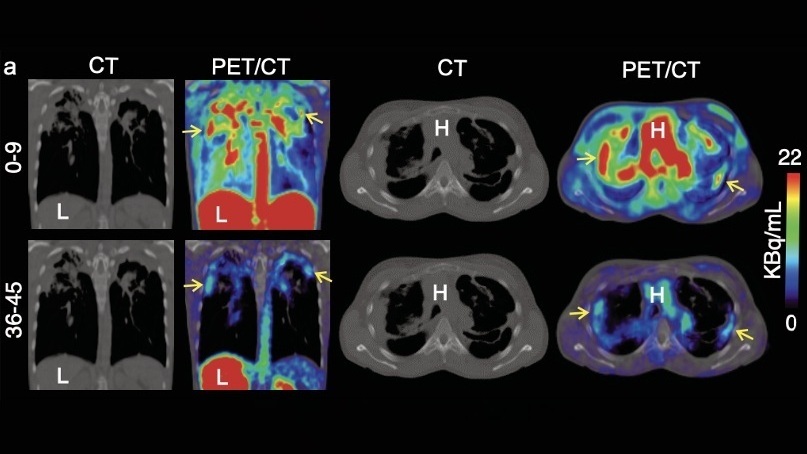PET/CT Enhances Inflammatory Bowel Disease Detection
By MedImaging International staff writers
Posted on 22 May 2013
Inflammatory bowel diseases (IBDs), such as ulcerative colitis and Crohn’s disease, may be identified and monitored more effectively in the future with positron emission tomography/computed tomography (PET/CT) imaging. Typically assessed by endoscopic and histologic evaluations, investigators have demonstrated the capability of PET/CT to identify lesions along the complete intestinal wall that could be missed with conventional imaging techniques. Posted on 22 May 2013
The study’s findings were published in the May 2013 issue of the Journal of Nuclear Medicine. “Animal models of intestinal inflammation have contributed substantially to the current understanding of IBD; however, endoscopic examinations on the animals can be complicated, and full histological workup of the murine colon does not allow for serial assessment,” said Dominik Bettenworth, MD, from the department of medicine, the University of Münster (Germany), and lead author of the study. “In this study, we evaluated 18F-FDG PET/CT as a noninvasive approach to serially assess IBD activity in small animals and confirmed its utility by analyzing PET/CT scans conducted in patients with Crohn’s disease.”
For the first phase of the study, researchers induced dextran sodium sulfate (DSS) colitis in lab mice and assessed the 18F-fluorodeoxyglucose (18F-FDG) uptake in multiple sections of the colon. Compared with control mice, an increase in 18F-FDG uptake was clearly noted in the DSS mice, with the most intensive areas of uptake in the medial and distal colon. Substantial correlation was found between the PET/CT and histologic evaluations. The research also identified extraintestinal alterations, such as bone marrow activation, in the DSS colitis-induced mice.
Based on the research findings in the colitic mice, researchers identified the extent of the mucosal damage as the parameter that correlated best to 18F-FDG uptake in the mice and in human patients with Crohn’s disease. 18F-FDG PET/CT scans of 25 Crohn’s patients were retrospectively analyzed, and the findings were then correlated to endoscopic procedures performed before or after the CT without any interfering treatments. In accordance with the results in the DSS colitis, an increased 18F-FDG uptake was found in 87% of deep mucosal ulcerations, whereas mild endoscopic lesions were detected in approximately 50% of patients assessed.
“In Crohn’s disease patients, 18F-FDG PET/CT seems to accurately detect advanced inflammatory changes and also unmask subepithelial disease activity that might be missed by colonoscopy. Therefore, PET/CT might serve as an additional tool for evaluating disease activity in IBD patients, e.g., in defining complete remission,” noted Dr. Bettenworth. Michael Schäfers, MD, from the department of nuclear medicine at the University of Münster, and senior author of the study, added, “Using a clinically established tracer, the translation of this approach into daily clinical routine should benefit patients in the near future, and will further promote the use of PET/CT for new indications in clinical algorithms.”
Crohn’s disease and ulcerative colitis are chronic-remittent, inflammatory conditions featuring characteristic mucosal lesions within the bowel leading to diarrhea, stricture formation, abdominal pain, and weight loss. The incidence rates for ulcerative colitis are on the rise worldwide.
Related Links:
University of Münster














